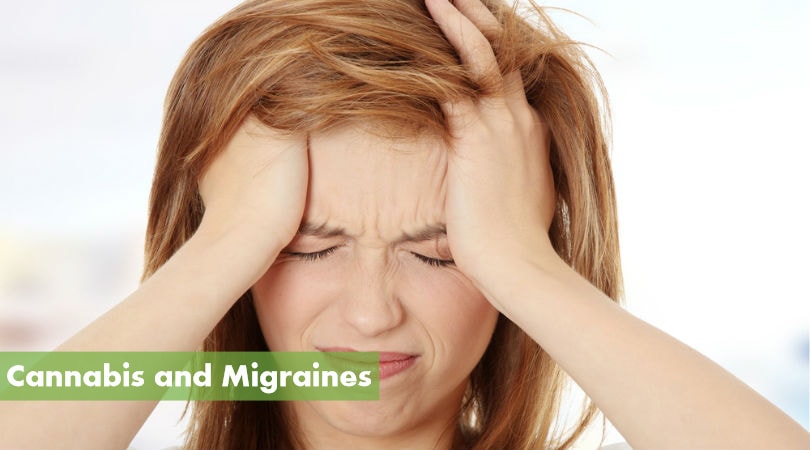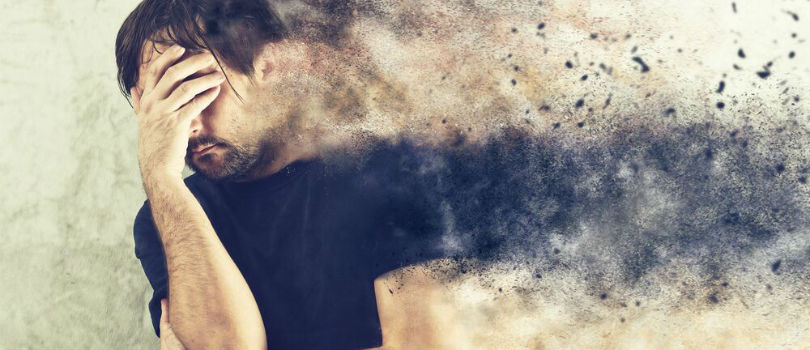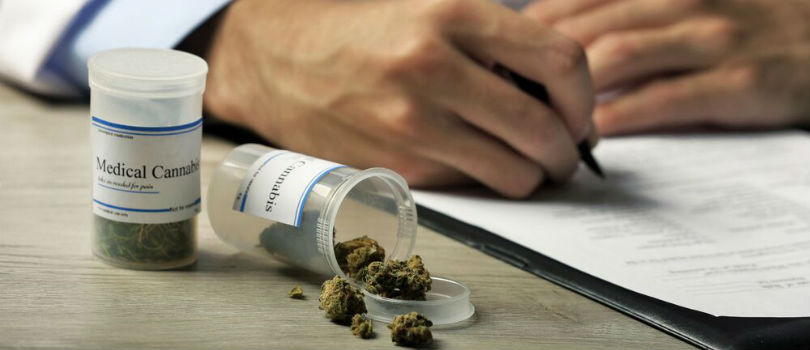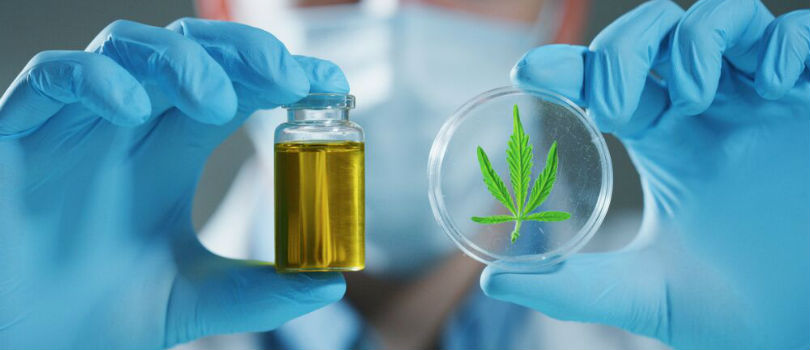Weed Could Be the Migraine Treatment You’ve Been Waiting For
Migraines are notoriously difficult to treat, but new research suggests that cannabis could be perfectly suited to the task. If you have ever experienced a migraine attack, you know that these are no ordinary headaches! With no determinable cause, no known cure, and conventional treatments often offering mixed results, migraines are notoriously difficult to treat and manage. However, cannabis has the potential to be the next big thing in migraine care.
If you have ever experienced a migraine attack, you know that these are no ordinary headaches! With no determinable cause, no known cure, and conventional treatments often offering mixed results, migraines are notoriously difficult to treat and manage. However, cannabis has the potential to be the next big thing in migraine care.
What exactly is a migraine?
While a throbbing headache (on one or both sides of the head) is certainly a typical migraine symptom, this condition often includes a host of other unpleasant symptoms. Nausea, vomiting, sensitivity to light, sound, touch, and odors, and tingling sensations in the neck and/or limbs can all accompany a migraine. In about 25% of cases, a sensory disturbance called an aura occurs during or prior to a migraine attack. An aura may be experienced as seeing flashes of light, shapes, bright spots, or blind spots, hearing noises, or feeling weakness or a tingling sensation in the face or hands.
Migraines can set in so quickly that sufferers feel blindsided, or they may set in gradually, with early warning symptoms (including visual disturbances, confusion, or difficulty speaking) leading up to the main event. A migraine can last for hours or even days. It is estimated that 90% of people affected by migraines cannot function normally (including being able to go to work or school) during a migraine attack. Most migraine sufferers experience a migraine attack once or twice per month, but some unfortunate people may experience symptoms most days out of any given month – or even daily. It’s common to feel tired and depleted for a day or two following a migraine attack.

90% of people affected by migraines cannot function normally during a migraine attack.
What causes a migraine?
The true cause of this debilitating condition is still unknown. However, many people have observed specific triggers that tend to prompt their migraines. Some common triggers include:
- Stress or anxiety
- Sensory stimulation (strong odors, loud noises, bright light, or irregular light, such as strobe lights at a concert or party)
- Physical exertion
- Certain foods or beverages, particularly those containing alcohol, caffeine, or monosodium glutamate (MSG), or those that a person may be allergic or sensitive to
- Too much or too little sleep
- Certain medications, including hormone replacements and some contraceptives
- Changes in weather and barometric pressure
- Hormonal changes, including those caused by the menstrual cycle
Who is most susceptible to migraines?
An alarmingly high number of people suffer from migraines – nearly 15% of the global population – with as many as 40 million people affected in the United States alone. Women are approximately 3 times more likely to suffer from migraines than men. A surprisingly large number of children also experience migraines, which often go undiagnosed.
Marijuana for migraines
Marijuana was recognized as one of the best available migraine treatments in the late 1800s. Marijuana has recently reclaimed its status as a legitimate medical treatment, following years of widespread prohibition. Well-known for its analgesic (pain-relieving) properties, many people have been turning to cannabis to treat the particularly stubborn pain of migraines. Though research on the link between marijuana and migraines remains sparse, several studies have shown significant reductions in the incidence and intensity of migraine attacks when treated with weed.

Many people have been turning to cannabis to treat the particularly stubborn pain of migraines.
Why is weed so effective against migraines?
It’s possible that weed owes its impressive efficacy against migraines to the way our bodies process cannabinoids – a family of chemical compounds in weed that includes THC and CBD. Our bodies produce their own cannabinoids, in what’s known as the endocannabinoid system (ECS). The ECS regulates an impressive number of brain and body systems and functions, including movement, mood, memory, and processing of pain. The cannabinoids in weed are easily processed by the ECS, and they can even fill in for our own endocannabinoids if our body isn’t producing enough.
Unlike most conventional medicines, which target one particular symptom or cause, cannabinoids affect multiple body systems simultaneously. It’s currently believed that migraines are caused by a chain reaction of effects within the brain, nervous system, and circulatory system.
For a long time, researchers had theorized that migraine pain was caused simply by excessive constriction and expansion of blood vessels in the head. And yes, blood vessel disorders may be part of the problem for many migraine sufferers. But the true cause of migraines appears to lie in the endocrine system. Two hormones that appear to be linked to migraines are estrogen and serotonin.
Q: Does marijuana help migraines?
A: Marijuana has been shown in several small studies to have a significant impact on the frequency and intensity of migraine attacks. Marijuana also relieves secondary symptoms, such as nausea, and can contribute to reduced stress and anxiety, both of which are known migraine triggers.
Q: Does smoking weed help migraines?
A: Smoking weed may be the fastest path to migraine relief. Smoked (or vaporized) marijuana begins to take effect within minutes, while all other delivery methods are somewhat slower.
Hormones and migraines – can weed help?
One theory suggests that particular cells in some people’s brains are prone to misfiring, then stimulating neurons in the largest nerve inside the head – the trigeminal nerve – which is directly connected to pain and motor control of the face. The stimulation of this nerve prompts the release of extra serotonin, causing the blood vessels in the head to constrict, contributing to the pain of a migraine.
As far as estrogen goes, women experience frequent fluctuations in estrogen levels, particularly during their fertile years. This may be the reason why so many more women than men suffer from migraines. This also makes sense, as women between the ages of 15 and 55 tend to suffer from migraines the most. When estrogen levels enter a “drop” phase, this may cause constriction of blood vessels. The nerves in the face and scalp may also become more sensitive to pain during this time.
Conventional serotonin-regulation medicines often carry side effects such as anxiety, nausea, and vomiting. Estrogen regulators (including birth control pills and hormone replacement therapy) can have similar effects. Marijuana naturally relieves anxiety, nausea, and vomiting, and in many cases positively affects serotonin levels. Some research suggests weed may help to elevate estrogen levels, too. Could marijuana kill two birds with one stone?

Marijuana naturally relieves anxiety, nausea, and vomiting, and in many cases positively affects serotonin levels.
Encouraging studies on migraines and marijuana
Research on the link between weed and migraines is still rather limited, but a few recent studies have shown cannabis to be at least as effective as conventional medical treatments – potentially more effective in some cases. One such study observed the effects of daily treatment with medical cannabis on a small group of people with a history of migraines.
Approximately 20% of the study’s participants saw their average migraine frequency drop from 10.4 attacks per month to 4.6. Some patients even found that cannabis use could stop migraine attacks from settling in. Inhaled cannabis was the most effective at stopping attacks in their tracks. Drowsiness, impaired concentration, and difficulties with dose timing and intensity were the only adverse cannabis-use side effects noted in these studies. The patients who experienced these issues the most were those who had used edible marijuana, which is naturally more difficult to consistently dose.
Medical marijuana for migraines
Prescribed medical marijuana is currently available for migraines in Canada, Australia, Germany, and several U.S. states. Delaware, New Jersey, Missouri, and Connecticut specifically list migraines as qualifying conditions. “Intractable pain” is a qualifying condition in Arkansas, Louisiana, Minnesota, New Hampshire, Pennsylvania, and Washington. Intractable pain is generally defined as persistent pain that doesn’t respond to conventional medical treatment. Migraines often fall into this category.
A number of other states (Alaska, Arizona, Colorado, Hawaii, Maryland, Michigan, Montana, Nevada, New Hampshire, New Mexico, New York, Oregon, Rhode Island, and Vermont) allow medical marijuana prescriptions for chronic and/or severe pain. California, Massachusetts, Oklahoma, and West Virginia currently allow physicians to prescribe medical weed for any condition they deem appropriate. If you live in a state where recreational cannabis is legal, you have the option of trying weed on your own when you feel a migraine coming on. Of course, it may take some trial and error to determine which dose and strain will actually give you the relief you seek.
Q: Can you get medical marijuana for migraines?
A: In Canada, Australia, Germany, and four U.S. states (Delaware, New Jersey, Missouri, and Connecticut) you can get a medical marijuana prescription for migraines. 24 other U.S. states currently allow medical cannabis prescriptions for chronic and/or intractable pain (pain that doesn’t respond to conventional treatment).

Prescribed medical marijuana is currently available for migraines in Canada, Australia, Germany, and several U.S. states.
Best marijuana strains for migraines
Just as migraine symptoms, frequency, and intensity can vary from person to person, so too can the most effective cannabis strain and dose amount for you. In general, indica and sativa strains with high levels of both THC and CBD tend to work well for many migraine patients. Also be on the lookout for strains with a higher amount of myrcene, a terpene (terpenes are aromatic chemicals found in weed) known for its powerful pain-relieving and anti-inflammatory qualities. Many users report strains high in myrcene as particularly effective against migraines.
CBD for migraines
CBD (cannabidiol) is a cannabinoid with impressive pain-relieving and anti-inflammatory qualities. CBD is not psychoactive (which means it cannot get you high) and higher levels of CBD in your weed can actually reduce the intensity of THC’s psychoactive effects. CBD is also effective against stress and anxiety, which are migraine attack triggers for many people.
CBD oil for migraines
One of the most popular ways to use CBD is in the form of highly concentrated oil. CBD oil takes effect rather quickly (within 15-20 minutes when used sublingually) and doesn’t carry the side effects or potential risks associated with smoking. CBD oil may also be ingested or applied directly to the skin in the affected area. The neck is a commonly effective application site for migraine pain.
Hemp oil for migraines
If you live in a region where cannabis is not legal, or you want to avoid the potential of a THC “high,” hemp-derived CBD oil may be enough to alleviate your symptoms. Hemp oil containing less than .03% THC is legal in all 50 U.S. states and is considered safe to use on children – even infants.
Q: Does CBD help migraines?
A: CBD has powerful analgesic and anti-inflammatory properties, which can significantly reduce the painful symptoms of migraines. CBD also reduces feelings of anxiety and stress, which often trigger migraine attacks.
Q: How to use CBD oil for migraines?
A: The fastest-acting way to take CBD oil is sublingually (a few drops placed under the tongue), which takes about 15 minutes to take effect. CBD oil may also be ingested or applied topically to the affected area (application to the neck is a popular choice for migraine pain).

CBD oil takes effect rather quickly and doesn’t carry the side effects or potential risks associated with smoking.
THC and migraines
THC (tetrahydrocannabinol) is the cannabinoid that gets you high, but it can do so much more than that. THC is a highly effective analgesic in its own right. THC can significantly lower levels of stress and anxiety, as well as help you relax, sleep, or feel uplifted. For the treatment of migraines, strains with high levels of THC, tempered by high levels of CBD, may be the most effective.
Can marijuana cause migraines?
The true cause of migraines is still unknown. However, it appears highly unlikely that using weed can cause migraines. Many conventional migraine medications, however, do carry the risk of increased migraines. Your body can build up a tolerance to these powerful medications, and overuse (which may be unavoidable if your migraines are frequent) can lead to more frequent migraines that are less responsive to treatment. It is possible that using weed instead could eliminate this serious risk factor. However, more research is still needed to be able to say for sure.
Hope on the horizon for migraine patients
Growing numbers of people are finding migraine relief in cannabis. For many, it’s the only thing that actually makes a significant dent in their symptoms. As researchers continue to dig into how marijuana and its cannabinoids interact with the body during migraine attacks, they may even be able to uncover the true cause of migraines. As medicinal cannabis continues to grow in popularity, mass-relief (with minimal side effects!) from this debilitating condition could be in sight.

Thanks for the post!I think that the dose of cannabis and the way you take it matters. I am a mental health counselor and know some patients that use cbd to prevent the migraine attack. But I also know people that feel dazed and nauseous when take marijuana and their migraine gets even worse. As far as I know there are several types of marijuana and marijuana-derived products, including sativa, indica and CBD strains. Different strains affect people differently, so it can be difficult to identify one type of marijuana that works best for everyone. Many migraine sufferers do not… Read more »